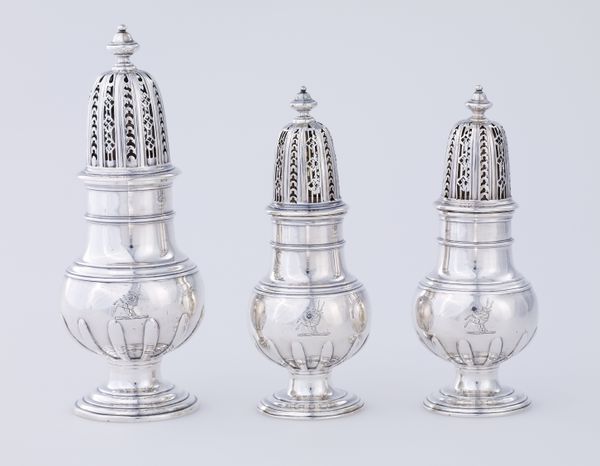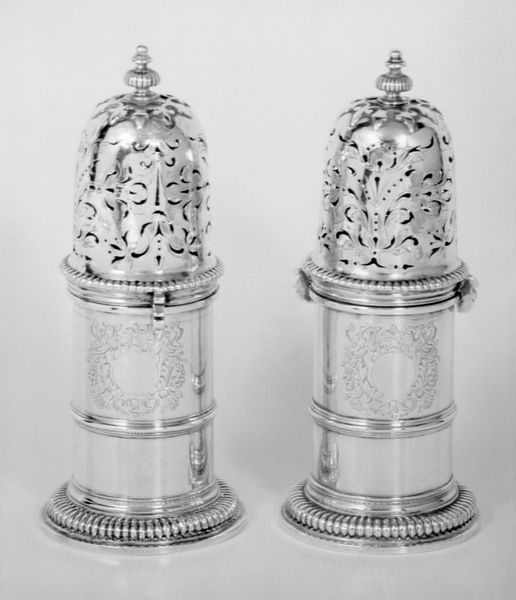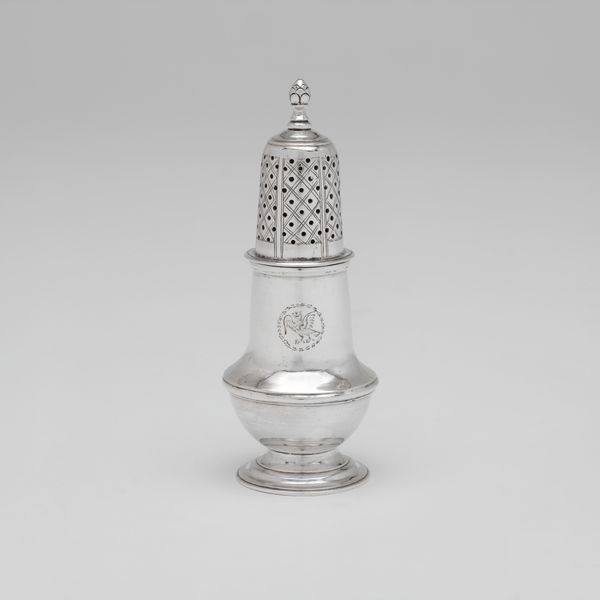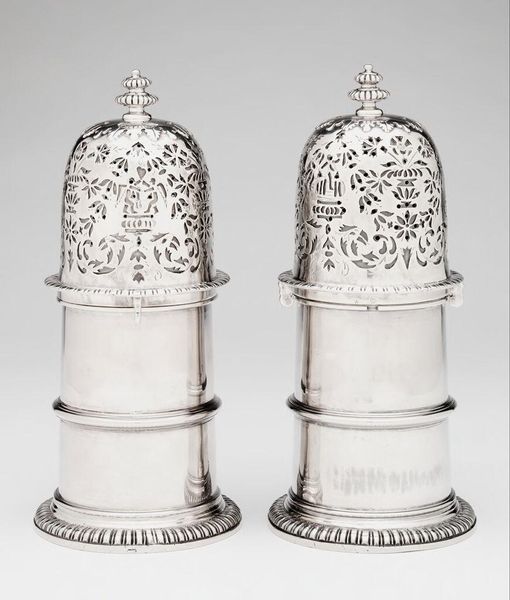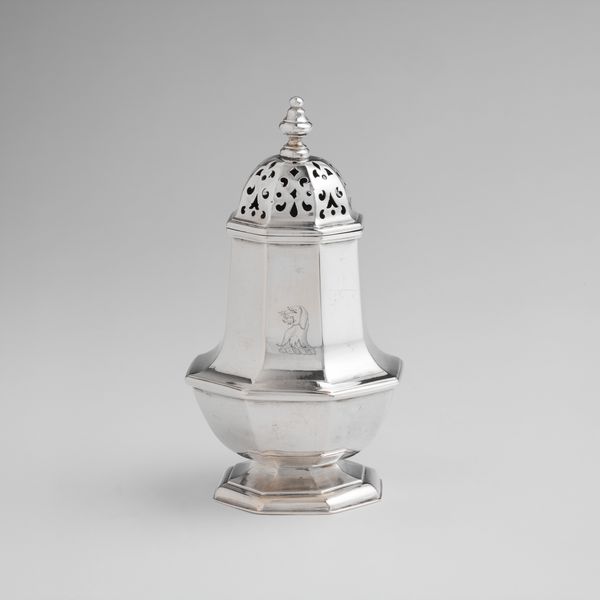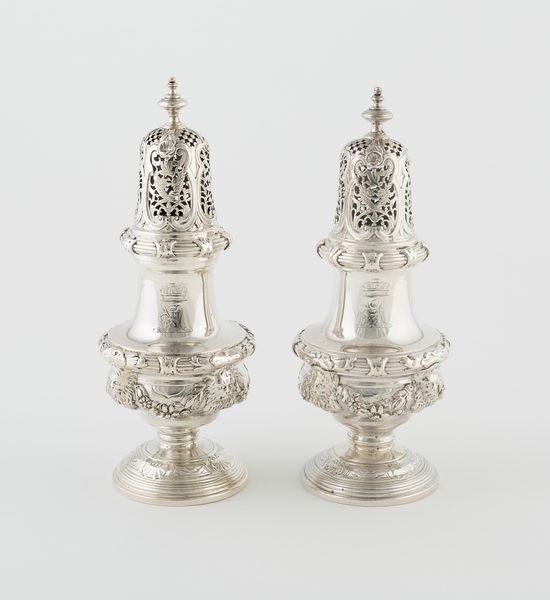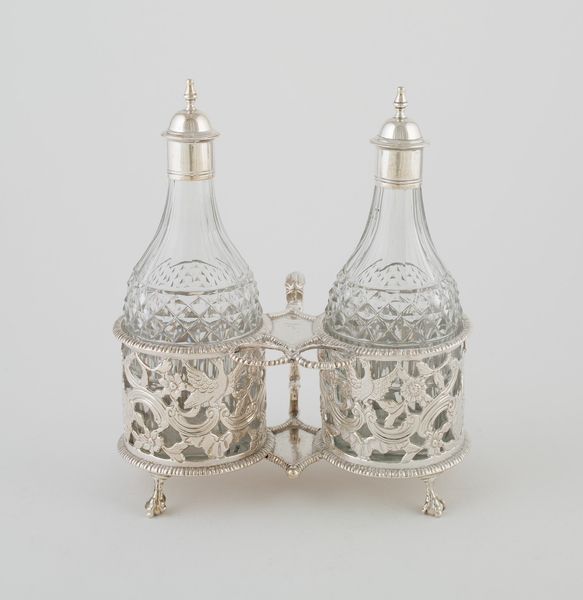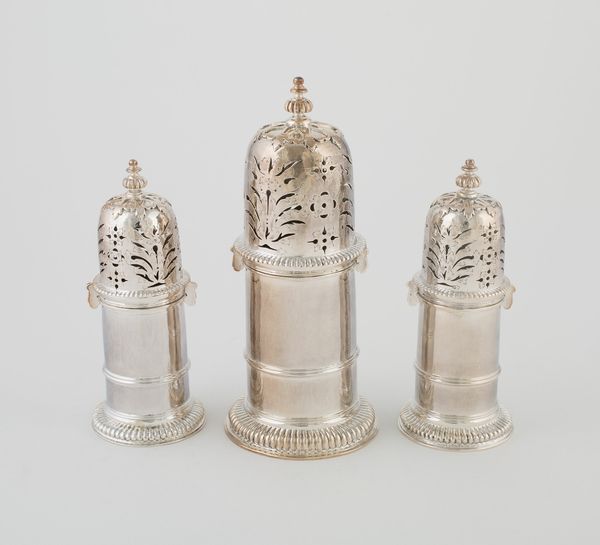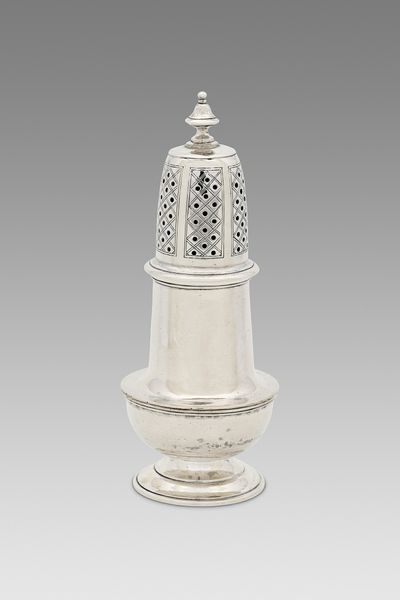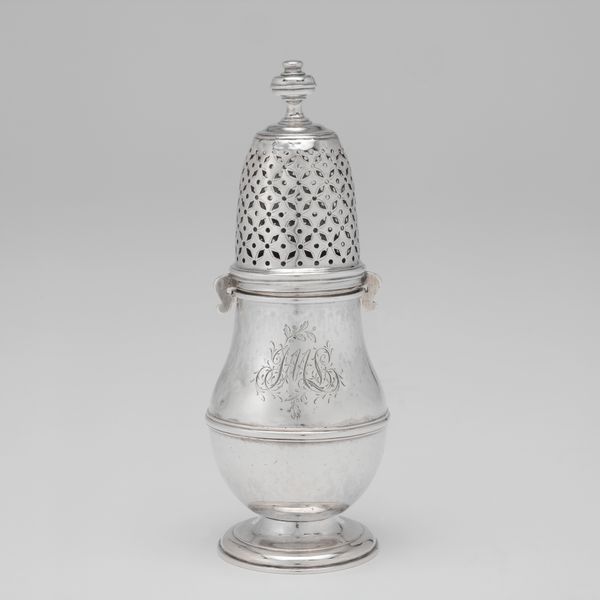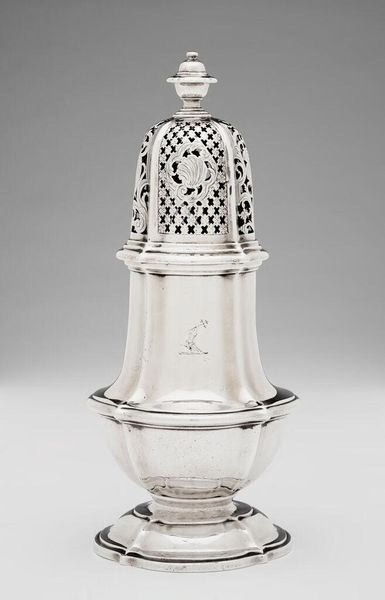
silver, metal
#
silver
#
baroque
#
metal
#
england
#
decorative-art
Copyright: Public Domain
These castors were made in the early 18th century by Isaac Liger and are made of silver. Notice the refined proportions, how the overall design is balanced between function and ornamentation. The castors play with symmetry and asymmetry through their shapes and sizes, creating a formal visual tension. Liger's meticulous craftsmanship is evident in the fine details of the pierced covers, the subtle curves of the bodies, and the crisp lines of the bases. The reflective quality of the silver enhances the interplay of light and shadow, further articulating the form. Consider how these formal elements—the modulation of shape, the treatment of surface texture, and the distribution of light—function as signs within a broader semiotic system. They speak to the cultural values of the time, where refinement and elegance were paramount. The castors are not simply utilitarian objects; they're artifacts that communicate status, taste, and the ideals of a particular era. Art invites ongoing interpretation and reassessment.
Comments
No comments
Be the first to comment and join the conversation on the ultimate creative platform.
